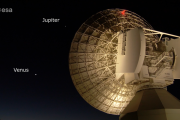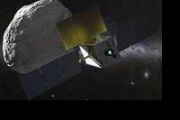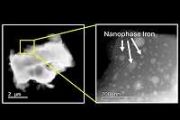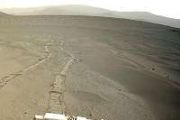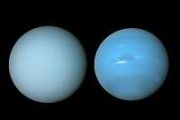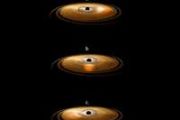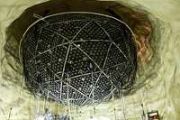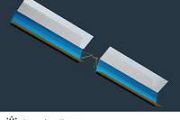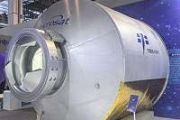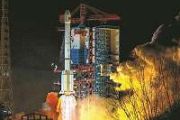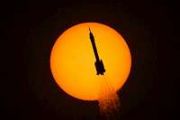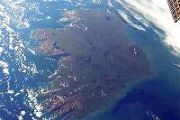
Copernical Team
Was Mars doomed to be a desert? Study proposes new explanation
 One of the great unsolved problems in modern planetary science is written on the surface of Mars.
Mars has canyons that were carved by rivers, so it was once warm enough for liquid water. How-and why-did it become it a barren desert today?
A study led by University of Chicago planetary scientist Edwin Kite puts forth a new explanation for why Mars never seems to stay balmy for long.
One of the great unsolved problems in modern planetary science is written on the surface of Mars.
Mars has canyons that were carved by rivers, so it was once warm enough for liquid water. How-and why-did it become it a barren desert today?
A study led by University of Chicago planetary scientist Edwin Kite puts forth a new explanation for why Mars never seems to stay balmy for long. Chloris Geospatial secures funding to expand forest carbon monitoring technology
 Chloris Geospatial has raised $8.5 million in Series A funding to advance its satellite-powered forest carbon monitoring solutions. The round was led by Future Energy Ventures, joined by returning investors AXA IM Alts, At One Ventures, Cisco Foundation, Counteract, and Orbia Ventures.
The funding will help the Boston-based firm scale its product development, grow commercial and technical
Chloris Geospatial has raised $8.5 million in Series A funding to advance its satellite-powered forest carbon monitoring solutions. The round was led by Future Energy Ventures, joined by returning investors AXA IM Alts, At One Ventures, Cisco Foundation, Counteract, and Orbia Ventures.
The funding will help the Boston-based firm scale its product development, grow commercial and technical Boeing wins major contract to deliver new generation strategic comms satellites
 Boeing has secured a $2.8 billion contract from the U.S. Space Force to develop and produce two satellites as part of the Evolved Strategic Satellite Communications (ESS) program, with the possibility of building two additional units. These satellites will play a central role in enhancing the nuclear command, control, and communications (NC3) network used by the President and joint strategic for
Boeing has secured a $2.8 billion contract from the U.S. Space Force to develop and produce two satellites as part of the Evolved Strategic Satellite Communications (ESS) program, with the possibility of building two additional units. These satellites will play a central role in enhancing the nuclear command, control, and communications (NC3) network used by the President and joint strategic for UK opens competitive bid for GBP 75 million orbital cleanup mission
 The UK Space Agency has launched a GBP 75.6 million competitive tender for a pioneering mission to remove derelict satellites from orbit, marking the country's first active orbital cleanup effort. The initiative is aimed at safeguarding critical satellite infrastructure that underpins modern services such as navigation, forecasting, and emergency communications.
Central to the Active Debri
The UK Space Agency has launched a GBP 75.6 million competitive tender for a pioneering mission to remove derelict satellites from orbit, marking the country's first active orbital cleanup effort. The initiative is aimed at safeguarding critical satellite infrastructure that underpins modern services such as navigation, forecasting, and emergency communications.
Central to the Active Debri UK thermal satellite firm wins ESA contract to deliver real time climate and security insights
 SatVu, a UK-based pioneer in thermal infrared imaging, has secured a contract of up to euro 3 million from the European Space Agency (ESA) to provide high-resolution thermal data to the Copernicus Contributing Mission (CCM) programme over the next three years.
This agreement, announced during the Living Planet Symposium in Vienna, marks the first Category 1 CCM contract awarded to a UK fi
SatVu, a UK-based pioneer in thermal infrared imaging, has secured a contract of up to euro 3 million from the European Space Agency (ESA) to provide high-resolution thermal data to the Copernicus Contributing Mission (CCM) programme over the next three years.
This agreement, announced during the Living Planet Symposium in Vienna, marks the first Category 1 CCM contract awarded to a UK fi PLD Space selected as leading contender for ESA sovereign launch initiative
 PLD Space has been chosen by the European Space Agency (ESA) as a preselected participant in the European Launcher Challenge (ELC), a major initiative designed to strengthen Europe's independent launch capabilities. Backed by up to euro 169 million per company, the ELC represents one of Spain's most significant space contract opportunities and will culminate in final selections following ESA's
PLD Space has been chosen by the European Space Agency (ESA) as a preselected participant in the European Launcher Challenge (ELC), a major initiative designed to strengthen Europe's independent launch capabilities. Backed by up to euro 169 million per company, the ELC represents one of Spain's most significant space contract opportunities and will culminate in final selections following ESA's M-MATISSE mission using robot orbiters could map Mars space weather before human landing
This request seems a bit unusual, so we need to confirm that you're human. Please press and hold the button until it turns completely green. Thank you for your cooperation!
Press and hold the button
If you believe this is an error, please contact our support team.
185.132.36.159 : 1ab5fe39-d127-428f-b240-b4fccbda
Space Rider reentry module undergoes 2.5 km drop tests
This request seems a bit unusual, so we need to confirm that you're human. Please press and hold the button until it turns completely green. Thank you for your cooperation!
Press and hold the button
If you believe this is an error, please contact our support team.
185.132.36.159 : a2cba841-74dc-4edf-b4c0-0d76c75f
Experimental satellite enters orbit aboard Long March 4C from Sichuan
 China successfully deployed an experimental satellite into orbit on Thursday afternoon, using a Long March 4C rocket launched from the Xichang Satellite Launch Center in Sichuan province. The launch occurred at 5:35 pm local time, according to China Aerospace Science and Technology Corp. (CASC).
The satellite, designated Shiyan 28B01, was developed by the Innovation Academy for Microsatell
China successfully deployed an experimental satellite into orbit on Thursday afternoon, using a Long March 4C rocket launched from the Xichang Satellite Launch Center in Sichuan province. The launch occurred at 5:35 pm local time, according to China Aerospace Science and Technology Corp. (CASC).
The satellite, designated Shiyan 28B01, was developed by the Innovation Academy for Microsatell Atomic 6 receives 2M Space Force award to advance next generation solar arrays
 Atomic-6 has secured a $2 million Tactical Funding Increase (TACFI) from the U.S. Space Force's Space Systems Command to accelerate development of its Light Wing solar array. The award supports a 21-month effort to mature and qualify the technology for commercial and defense missions.
The all-composite Light Wing array offers more than four times the power-per-kilogram of current systems,
Atomic-6 has secured a $2 million Tactical Funding Increase (TACFI) from the U.S. Space Force's Space Systems Command to accelerate development of its Light Wing solar array. The award supports a 21-month effort to mature and qualify the technology for commercial and defense missions.
The all-composite Light Wing array offers more than four times the power-per-kilogram of current systems, 





